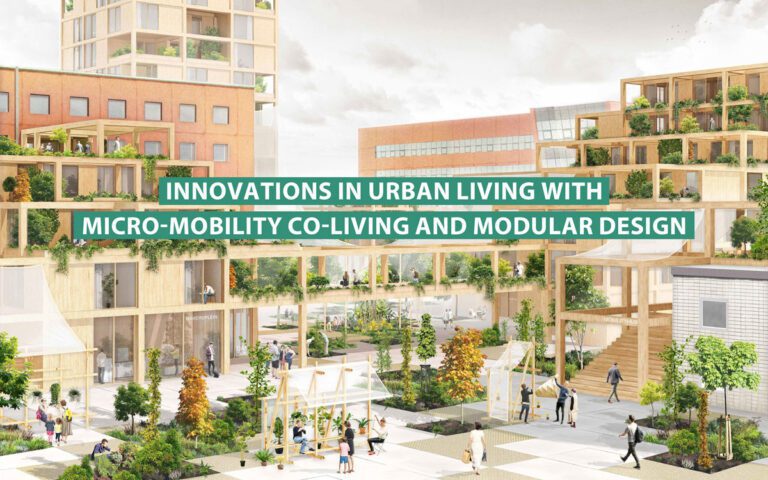
How Market Forces Are Transforming the Role of Urban Planners

In the ever-evolving landscape of urban development, the interplay between state and market forces is reshaping the role of urban planners. As cities worldwide grapple with rapid population growth, climate change, and economic shifts, understanding the dynamics of state-market relations is more crucial than ever. This article explores how urban planning is being redefined, highlighting the importance of historical context, political ideology, and global economic conditions.

The Shifting Landscape of Urban Planning
Urban planning is experiencing a profound transformation, evolving from a rigid framework into a dynamic practice that must adapt to ever-changing market forces. In this contemporary context, urban planners are tasked with the complex challenge of harmonizing public interests with the demands of private market activities. This dual focus requires a deep understanding of local and global conditions, pushing planners to rethink traditional approaches.
In developing nations, this challenge becomes even more pronounced. Over 1 billion people worldwide live in informal settlements, often characterized by inadequate infrastructure and limited access to essential services. The United Nations reports that this number is projected to rise significantly if proactive measures are not taken. For urban planners, the urgency to formulate inclusive policies is paramount. Planners must engage with marginalized communities, ensuring that their needs are reflected in development strategies.
Cities like Jakarta and Nairobi exemplify the complexities of urban planning in the face of informal housing markets. In Jakarta, for instance, rapid urbanization has led to nearly 60% of the population living in slums, often without basic services such as clean water and sanitation. Planners in these environments are not just tasked with implementing infrastructure projects; they must also address underlying socio-economic disparities and environmental vulnerabilities.
Successful urban planning relies heavily on data. A study conducted by The World Bank found that cities that employ data analytics can achieve planning efficiency improvements of up to 30%. This approach allows planners to better anticipate market shifts and resource needs. For instance, smart city initiatives are increasingly being adopted, leveraging technology to collect real-time data on traffic, housing, and public services, thus enabling more responsive and adaptive planning processes.
The integration of sustainable practices into urban planning is also critical. According to the Intergovernmental Panel on Climate Change (IPCC), urban areas are responsible for 70% of global greenhouse gas emissions, making sustainable urban development not just beneficial, but essential. Cities are now experimenting with green infrastructure solutions, such as urban forests and green roofs, to combat environmental challenges while enhancing community resilience.

Historical Context Matters
The effectiveness of urban planning cannot be divorced from its historical and geographical context. Intellectual debates surrounding the role of public planning often focus on abstract philosophical arguments, overlooking the practical realities that planners encounter daily. Historical case studies reveal that planning successes and failures are frequently tied to the socio-political climate of the time. For example, the New Urbanism movement emerged in the late 20th century as a response to suburban sprawl, advocating for walkable communities and mixed-use developments. Understanding these historical trends allows planners to craft solutions that resonate with contemporary needs.

Market Forces and Urban Resilience
Urban resilience has emerged as a critical response to the pressures exerted by market forces and external shocks, reflecting the recognition that cities are dynamic ecosystems. These urban environments are increasingly required to withstand a multitude of challenges, ranging from economic fluctuations to climate-related disasters. As cities grow, the need to integrate resilience into planning and development becomes paramount.
The OECD reports that cities investing in resilience strategies, such as enhanced infrastructure and diversified economies, are better positioned to thrive amid uncertainties. This investment isn’t just about protection; it represents a proactive approach to safeguarding communities and ensuring economic viability.

Take New York City, for instance. With a commitment to invest $19.5 billion in climate resilience projects by 2026, the city is making a concerted effort to address vulnerabilities in its infrastructure while fostering economic growth. This ambitious plan includes strengthening coastal defenses, upgrading public transportation systems, and enhancing green spaces. By focusing on these areas, New York aims to protect its most vulnerable communities, many of which are located in flood-prone zones, while simultaneously creating jobs and stimulating local economies.
Investments in resilience are not just limited to large metropolitan areas. Smaller cities are also recognizing the importance of resilience in the face of market pressures. Cities like Charleston, South Carolina, are adopting strategies that focus on climate adaptation and economic diversification. In 2020, Charleston initiated a $100 million project to bolster its stormwater management system, a crucial step in safeguarding both its infrastructure and real estate values. The project exemplifies how even modest-sized cities can leverage resilience strategies to protect their communities and stimulate local economic activity.

The Role of Data in Urban Planning

In this data-driven age, urban planners must leverage advanced analytics to inform their decisions. Real-time data on population trends, housing markets, and transportation patterns can provide invaluable insights into urban dynamics. A recent study revealed that cities utilizing big data analytics can improve planning efficiency by up to 30%. Planners who embrace technology and data will be better equipped to anticipate market shifts and respond proactively.
The Importance of Community Engagement
Community engagement is another vital component of modern urban planning. Planners must work collaboratively with residents to identify their needs and aspirations. Participatory planning processes not only foster community ownership but also enhance the legitimacy of planning decisions. For instance, cities like Portland, Oregon, have successfully implemented inclusive planning initiatives, leading to higher satisfaction rates among residents. By incorporating diverse perspectives, planners can create spaces that truly reflect the identity and desires of the community.
The Global Context of Urban Planning
Urban planning does not exist in a vacuum; it is influenced by global trends such as migration, climate change, and economic fluctuations. Planners must consider how these forces affect their local contexts and be prepared to respond accordingly. For example, the ongoing migration crisis has led cities in Europe to rethink their housing strategies, prioritizing affordable and accessible living conditions for newcomers. By understanding global patterns, urban planners can create more resilient and adaptable cities.
Conclusion: A Call for Adaptability
As urban environments continue to evolve, the role of the urban planner must also transform. By acknowledging the historical, geographical, and market influences on planning, professionals can craft strategies that are not only responsive but also visionary. In an era marked by uncertainty, adaptability is key. Urban planners have the opportunity to shape resilient, inclusive cities that reflect the diverse needs of their populations.
In conclusion, understanding the complexities of market forces and state relations is essential for urban planners navigating the challenges of the 21st century. As they work to create sustainable and equitable urban spaces, planners must remain flexible and informed, using data and historical context as tools for success. By doing so, they can ensure that urban planning is not just a reactive measure but a proactive strategy for building better cities for future generations.
Summary:
- Evolving Role of Planners: Urban planning is increasingly shaped by the interplay between state and market forces, requiring planners to balance public interests with private demands.
- Informal Settlements: Over 1 billion people live in informal settlements, with this number projected to grow, emphasizing the need for inclusive policies that engage marginalized communities.
- Data Utilization: Cities employing data analytics can boost planning efficiency by up to 30%, helping planners anticipate market shifts and optimize resource allocation.
- Resilience Investment: Urban resilience strategies are essential for cities facing economic and environmental challenges. For instance, New York City plans to invest $19.5 billion in climate resilience by 2026.
- Global Influences: Urban planners must adapt to global trends like migration and climate change, as seen in European cities rethinking housing policies for newcomers.
- Historical Context: Effective urban planning requires understanding historical and geographical contexts, as past movements like New Urbanism illustrate the influence of socio-political climates on planning outcomes.
UDL Illustrator Masterclass
Visualizing Architecture and Urban Diagrams

Urban Design Lab
About the Author
This is the admin account of Urban Design Lab. This account publishes articles written by team members, contributions from guest writers, and other occasional submissions. Please feel free to contact us if you have any questions or comments.
Related articles



Micro-Mobility and Modular Design in Urban Living


Rethinking Urban Planning Careers in India

5-Days UDL GIS
Masterclass
GIS Made Easy – Learn to Map, Analyse, and Transform Urban Futures
Session Dates
14th-18th July 2025

Free E-Book
From thesis to Portfolio
A Guide to Convert Academic Work into a Professional Portfolio”
Recent Posts
- Article Posted:
- Article Posted:
- Article Posted:
- Article Posted:
- Article Posted:
- Article Posted:
- Article Posted:
- Article Posted:
- Article Posted:
- Article Posted:
- Article Posted:
- Article Posted:
- Article Posted:
- Article Posted:
Sign up for our Newsletter
“Let’s explore the new avenues of Urban environment together “
















































One Comment